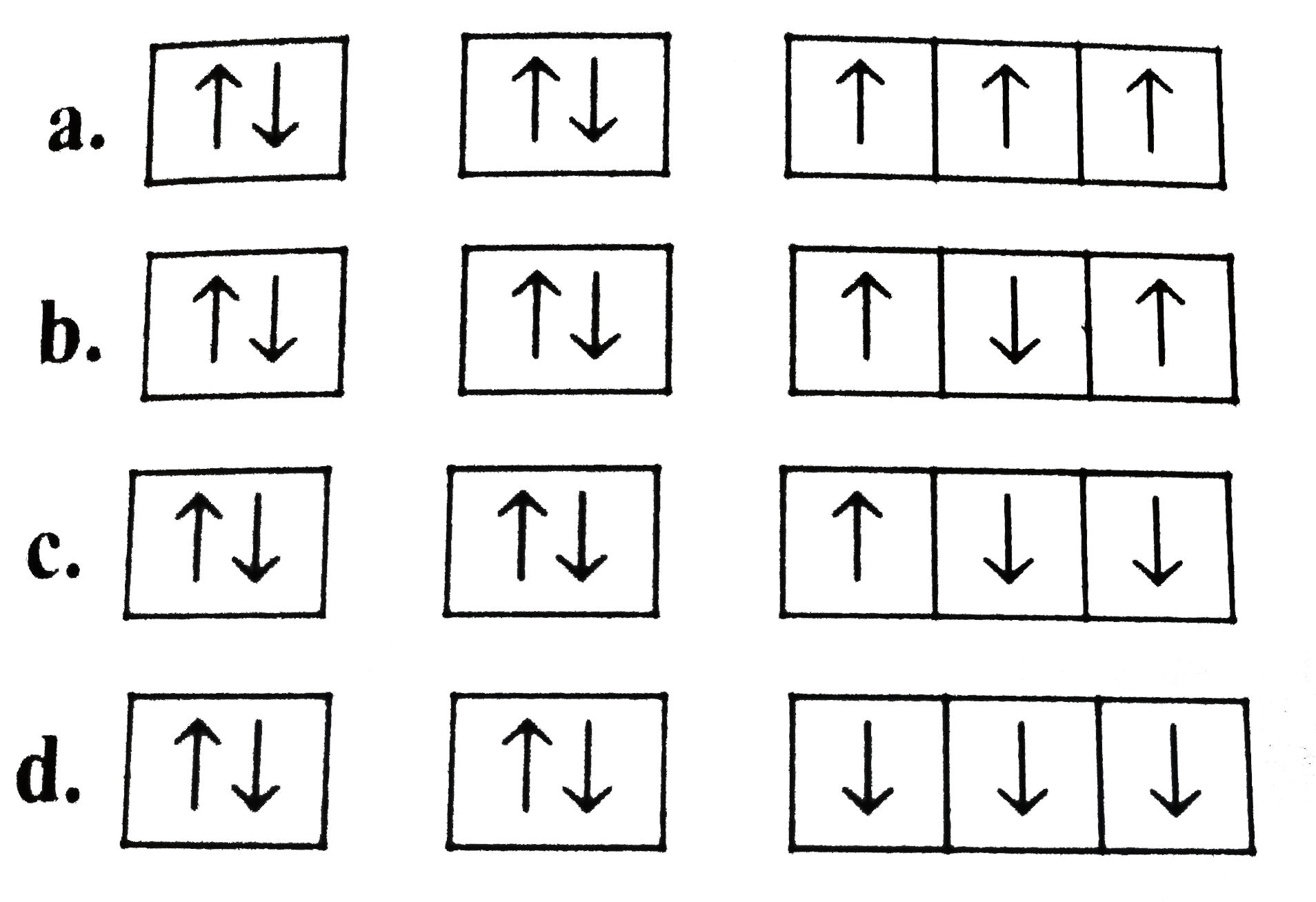Which of the following options does not represent ground state electronic configuration of an atom?
1s22s22p63s23d84s2
1s22s22p63s23p63d94s2
1s22s22p63d104s1
1s22s22p63s23p63d54s1
To determine which of the given electronic configurations does not represent the ground state electronic configuration of an atom, we will analyze each option step by step.
1. Understanding Ground State Configuration:
- The ground state electronic configuration of an atom is the arrangement of electrons in the lowest energy levels. Electrons fill orbitals in a specific order based on the Aufbau principle, Hund's rule, and the Pauli exclusion principle.
2. Analyzing Each Option:
- Option A: 1s² 2s² 2p⁶ 3s² 3d⁸ 4s²
- Total Electrons: 2 + 2 + 6 + 2 + 8 + 2 = 22 electrons.
- This configuration corresponds to Titanium (Ti), which is correct.
- Option B: 1s² 2s² 2p⁶ 3s² 3p⁶ 3d⁹ 4s²
- Total Electrons: 2 + 2 + 6 + 2 + 6 + 9 + 2 = 29 electrons.
- The correct configuration for 29 electrons (Copper, Cu) is 1s² 2s² 2p⁶ 3s² 3p⁶ 3d¹⁰ 4s¹.
- This configuration is incorrect because it does not follow the expected filling order and results in an unstable arrangement.
- Option C: 1s² 2s² 2p⁶ 3s² 3p⁶ 3d¹⁰ 4s¹
- Total Electrons: 2 + 2 + 6 + 2 + 6 + 10 + 1 = 29 electrons.
- This is the correct configuration for Copper (Cu), as it reflects the stability of a fully filled d subshell.
- Option D: 1s² 2s² 2p⁶ 3s² 3p⁶ 3d⁵ 4s¹
- Total Electrons: 2 + 2 + 6 + 2 + 6 + 5 + 1 = 24 electrons.
- This configuration corresponds to Chromium (Cr), which is also correct as it reflects the half-filled stability of the d subshell.
3. Conclusion:
- The only incorrect configuration among the options is Option B: 1s² 2s² 2p⁶ 3s² 3p⁶ 3d⁹ 4s². The correct configuration should be 1s² 2s² 2p⁶ 3s² 3p⁶ 3d¹⁰ 4s¹ for Copper.
Final Answer:
Option B does not represent the ground state electronic configuration of an atom.
---
- The ground state electronic configuration of an atom is the arrangement of electrons in the lowest energy levels. Electrons fill orbitals in a specific order based on the Aufbau principle, Hund's rule, and the Pauli exclusion principle.
- Option A: 1s² 2s² 2p⁶ 3s² 3d⁸ 4s²
- Total Electrons: 2 + 2 + 6 + 2 + 8 + 2 = 22 electrons.
- This configuration corresponds to Titanium (Ti), which is correct.
- Option B: 1s² 2s² 2p⁶ 3s² 3p⁶ 3d⁹ 4s²
- Total Electrons: 2 + 2 + 6 + 2 + 6 + 9 + 2 = 29 electrons.
- The correct configuration for 29 electrons (Copper, Cu) is 1s² 2s² 2p⁶ 3s² 3p⁶ 3d¹⁰ 4s¹.
- This configuration is incorrect because it does not follow the expected filling order and results in an unstable arrangement.
- Total Electrons: 2 + 2 + 6 + 2 + 6 + 10 + 1 = 29 electrons.
- This is the correct configuration for Copper (Cu), as it reflects the stability of a fully filled d subshell.
- Total Electrons: 2 + 2 + 6 + 2 + 6 + 5 + 1 = 24 electrons.
- This configuration corresponds to Chromium (Cr), which is also correct as it reflects the half-filled stability of the d subshell.
- The only incorrect configuration among the options is Option B: 1s² 2s² 2p⁶ 3s² 3p⁶ 3d⁹ 4s². The correct configuration should be 1s² 2s² 2p⁶ 3s² 3p⁶ 3d¹⁰ 4s¹ for Copper.
Option B does not represent the ground state electronic configuration of an atom.
Topper's Solved these Questions
Similar Questions
The electronic configuration of Ag atom is
View SolutionThe correct ground state electronic configuration of chromium atom is :
View SolutionWhich one is the correct ground state electronic configuration :
View Solutionthe ground state electronic configuration of chromium can be written as
View SolutionWrite the ground state electronic configuration of F+2.
View SolutionThe correct state electronic configuration of chromium atom is
View SolutionWhich of the following statements is not correct about the electronic configuration of gaseou chromium atom
View SolutionThe ground state electronic configuration of nitrogen atom can be represented as:
View SolutionMatch the following species with their corresponding ground state electronic configuration

View SolutionThe ground state electronic configeration of nitrogen atom can be represented by

View Solution